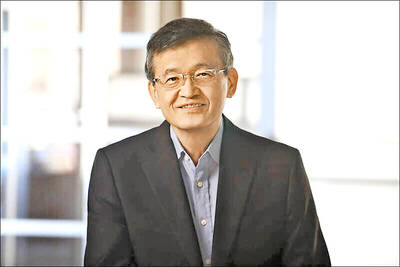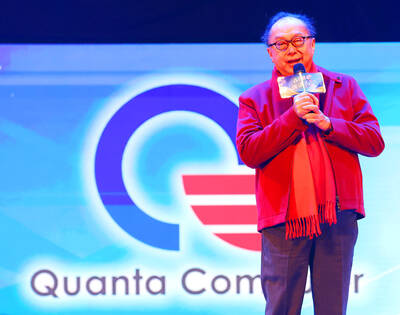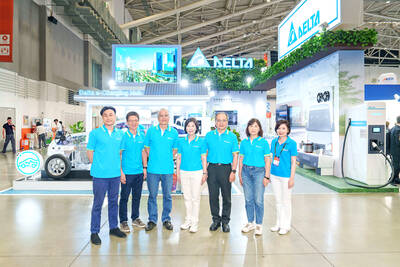Japan’s central bank has become the first among G7 nations to own assets collectively worth more than the country’s entire economy, following a half-decade spending spree designed to accelerate weak price growth.
The ¥553.6 trillion (US$4.87 trillion) assets the Bank of Japan (BOJ) holds are worth more than five times the world’s most valuable company, Apple Inc, and 25 times the market capitalization of Japan’s most valuable company, Toyota Motor Corp.
They are also bigger than the combined GDPs of five emerging markets — Turkey, Argentina, South Africa, India and Indonesia.
Central bank data released yesterday showed how much the BOJ has amassed over five-and-a-half years of what it calls “quantitative and qualitative” easing policy.
The BOJ has become the world’s second central bank after the Swiss National Bank and the first among G7 countries to own a pool of assets bigger than the economy it is trying to stimulate.
Japan’s nominal GDP for the April-June, the latest data available, was an annualized ¥552.8207 trillion.
The reading for July-September, due today, is expected to show a contraction after natural disasters.
While some analysts credit its unique policies with lifting the economy out of decades of deflationary pressures, the BOJ has had little success meeting its 2 percent inflation target or reviving domestic demand and growth.
Some investors see the BOJ’s inflation target as too ambitious and one that has forced it to keep buying a massive amount of bonds and stocks even as other major central banks have started to remove crisis-era policy accommodation.
At the same time, the aggressive asset purchases in recent years now mean the BOJ owns about 45 percent of the ¥1 quadrillion Japanese government bond (JGB) market, crowding out banks and other investors.
“The Bank of Japan’s policy is clearly not sustainable. The BOJ would suffer losses if it would have to raise interest rates to, say, two percent,” said Hidenori Suezawa, a fiscal analyst at SMBC Nikko Securities in Tokyo. “Also, in case of emergencies, such as a natural disaster or a war, the BOJ won’t be able to finance government bonds any longer.”
The BOJ’s assets started ballooning when Governor Haruhiko Kuroda took the helm in early 2013, vowing that such steps would boost Japan’s inflation to 2 percent in two years.
That inflation target has proved elusive, barring a brief spike in prices after a sales tax hike in 2014.
Since Kuroda started the massive stimulus, nominal GDP has grown a total of 11 percent, or a quarterly average of 0.50 percent, one of the fastest growth rates in recent history.
Kuroda’s predecessor, Masaaki Shirakawa, saw the economy shrink 6 percent, or a quarterly average of 0.33 percent, during his tenure, though the global financial crisis in 2008 and tsunami and nuclear disaster in 2001 are largely to blame.
However, real growth under Kuroda looks less impressive, with a total of just 6.7 percent so far, or a quarterly average of 0.31 percent.
That falls short of the growth of 8.75 percent, or 0.44 percent per quarter, under then-governor Toshihiko Fukui in 2003 to 2008, although he enjoyed a tailwind from brisk growth in emerging markets during that period.
Many investors think Kuroda’s aggressive easing is approaching a limit.
The BOJ has been slowing its bond purchase, with its buying falling well short of its semi-official target to increase JGB holdings by ¥80 trillion per year.
The central bank’s participation in financial markets has been controversial and heavily criticized by Japan’s major market participants, who say it has sapped liquidity in secondary trading of some segments, especially the domestic government bond market.

Intel Corp chief executive officer Lip-Bu Tan (陳立武) is expected to meet with Taiwanese suppliers next month in conjunction with the opening of the Computex Taipei trade show, supply chain sources said on Monday. The visit, the first for Tan to Taiwan since assuming his new post last month, would be aimed at enhancing Intel’s ties with suppliers in Taiwan as he attempts to help turn around the struggling US chipmaker, the sources said. Tan is to hold a banquet to celebrate Intel’s 40-year presence in Taiwan before Computex opens on May 20 and invite dozens of Taiwanese suppliers to exchange views

Application-specific integrated circuit designer Faraday Technology Corp (智原) yesterday said that although revenue this quarter would decline 30 percent from last quarter, it retained its full-year forecast of revenue growth of 100 percent. The company attributed the quarterly drop to a slowdown in customers’ production of chips using Faraday’s advanced packaging technology. The company is still confident about its revenue growth this year, given its strong “design-win” — or the projects it won to help customers design their chips, Faraday president Steve Wang (王國雍) told an online earnings conference. “The design-win this year is better than we expected. We believe we will win

Quanta Computer Inc (廣達) chairman Barry Lam (林百里) is expected to share his views about the artificial intelligence (AI) industry’s prospects during his speech at the company’s 37th anniversary ceremony, as AI servers have become a new growth engine for the equipment manufacturing service provider. Lam’s speech is much anticipated, as Quanta has risen as one of the world’s major AI server suppliers. The company reported a 30 percent year-on-year growth in consolidated revenue to NT$1.41 trillion (US$43.35 billion) last year, thanks to fast-growing demand for servers, especially those with AI capabilities. The company told investors in November last year that

Power supply and electronic components maker Delta Electronics Inc (台達電) yesterday said it plans to ship its new 1 megawatt charging systems for electric trucks and buses in the first half of next year at the earliest. The new charging piles, which deliver up to 1 megawatt of charging power, are designed for heavy-duty electric vehicles, and support a maximum current of 1,500 amperes and output of 1,250 volts, Delta said in a news release. “If everything goes smoothly, we could begin shipping those new charging systems as early as in the first half of next year,” a company official said. The new